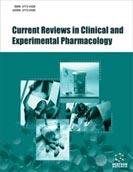Abstract
Background: Green tea has been extensively studied for its potential health benefits against diseases, such as cancers, cognitive degenerative diseases, and cardiovascular diseases.
Methods: The authors undertook a structured search of peer-reviewed research articles from three databases including PubMed, Embase, and Ovid MEDLINE. Recent and up-to-date studies relevant to the topic were included.
Results: Green tea extract exerts its functions by interacting with multiple signalling pathways in human cells. Protein tyrosine kinase is one of the examples. Abnormal activation of tyrosine kinase is observed in some tumour cells. Green tea extract inhibits phosphorylation, reduces expression, or attenuates downstream signalling of epidermal growth factor receptor, insulin-like growth factor receptor, vascular endothelial growth factor receptor, and non-receptor tyrosine kinase. Combination of green tea extract with tyrosine kinase inhibitors may provide synergistic effects by overcoming acquired resistance.
Conclusion: Green tea extract can affect multiple receptor targets. In the current review, we discuss the pharmacological mechanisms of green tea on tyrosine kinases and their implications on common diseases.
Keywords: Cancer, green tea, tyrosine kinase, targeted therapy, multiple signalling pathways, synergistic effects.
Current Reviews in Clinical and Experimental Pharmacology
Title:Pharmacologic Evidence of Green Tea in Targeting Tyrosine Kinases
Volume: 16 Issue: 3
Author(s): Joyce T.S. Li, Kam L. Hon*, Alexander K.C. Leung and Vivian W.Y. Lee
Affiliation:
- Department of Paediatrics, The Chinese University of Hong Kong; 6/F, Clinical Sciences Building, Prince of Wales Hospital, Shatin,Hong Kong
Keywords: Cancer, green tea, tyrosine kinase, targeted therapy, multiple signalling pathways, synergistic effects.
Abstract:
Background: Green tea has been extensively studied for its potential health benefits against diseases, such as cancers, cognitive degenerative diseases, and cardiovascular diseases.
Methods: The authors undertook a structured search of peer-reviewed research articles from three databases including PubMed, Embase, and Ovid MEDLINE. Recent and up-to-date studies relevant to the topic were included.
Results: Green tea extract exerts its functions by interacting with multiple signalling pathways in human cells. Protein tyrosine kinase is one of the examples. Abnormal activation of tyrosine kinase is observed in some tumour cells. Green tea extract inhibits phosphorylation, reduces expression, or attenuates downstream signalling of epidermal growth factor receptor, insulin-like growth factor receptor, vascular endothelial growth factor receptor, and non-receptor tyrosine kinase. Combination of green tea extract with tyrosine kinase inhibitors may provide synergistic effects by overcoming acquired resistance.
Conclusion: Green tea extract can affect multiple receptor targets. In the current review, we discuss the pharmacological mechanisms of green tea on tyrosine kinases and their implications on common diseases.
Export Options
About this article
Cite this article as:
Li T.S. Joyce , Hon L. Kam *, Leung K.C. Alexander and Lee W.Y. Vivian , Pharmacologic Evidence of Green Tea in Targeting Tyrosine Kinases, Current Reviews in Clinical and Experimental Pharmacology 2021; 16 (3) . https://dx.doi.org/10.2174/1574884715666201016122612
| DOI https://dx.doi.org/10.2174/1574884715666201016122612 |
Print ISSN 2772-4328 |
| Publisher Name Bentham Science Publisher |
Online ISSN 2772-4336 |
 5
5
- Author Guidelines
- Graphical Abstracts
- Fabricating and Stating False Information
- Research Misconduct
- Post Publication Discussions and Corrections
- Publishing Ethics and Rectitude
- Increase Visibility of Your Article
- Archiving Policies
- Peer Review Workflow
- Order Your Article Before Print
- Promote Your Article
- Manuscript Transfer Facility
- Editorial Policies
- Allegations from Whistleblowers
Related Articles
-
Design, Synthesis and Antiproliferative Activity of 2-Acetamidothiazole-5- carboxamide Derivatives
Medicinal Chemistry Recent Advances in Chalcone-Based Anticancer Heterocycles: A Structural and Molecular Target Perspective
Current Medicinal Chemistry The Hsp32 Inhibitors SMA-ZnPP and PEG-ZnPP Exert Major Growth-Inhibitory Effects on CD34+/CD38+ and CD34+/CD38- AML Progenitor Cells
Current Cancer Drug Targets The Impact of Molecularly Targeted Therapies Upon the Understanding of Leukemogenesis and the Role of Hematopoietic Stem Cell Transplantation in Acute Promyelocytic Leukemia
Current Stem Cell Research & Therapy Signaling Intermediates (PI3K/PTEN/AKT/mTOR and RAF/MEK/ERK Pathways) as Therapeutic Targets for Anti-Cancer and Anti-Angiogenesis Treatments
Current Signal Transduction Therapy Anti-inflammatory, Antioxidant, Lung and Liver Protective Activity of <i>Galaxaura oblongata</i> as Antagonistic Efficacy against LPS using Hematological Parameters and Immunohistochemistry as Biomarkers
Cardiovascular & Hematological Agents in Medicinal Chemistry Recent Advances in Small Molecule Prodrugs for Cancer Therapy
Anti-Cancer Agents in Medicinal Chemistry Co-morbidity of Covid-19 and Stenotrophomonas maltophilia in a Patient with Hodgkin's Lymphoma History from North of Iran
Infectious Disorders - Drug Targets Synergy Against Fungal Pathogens: Working Together is Better Than Working Alone
Current Medicinal Chemistry Histone Deacetylase Inhibitors and Anticancer Therapy
Current Medicinal Chemistry - Anti-Cancer Agents Preclinical and Clinical Studies of Chidamide (CS055/HBI-8000), An Orally Available Subtype-selective HDAC Inhibitor for Cancer Therapy
Anti-Cancer Agents in Medicinal Chemistry Immune Function in Pregnant Women with Affective Disorders
Current Psychiatry Reviews Emerging Concepts in the Analysis of Mitochondrial Genome Instability
Current Genomics Interaction Between Arsenic Trioxide and Human Primary Cells: Emphasis on Human Cells of Myeloid Origin
Inflammation & Allergy - Drug Targets (Discontinued) Mevalonate Pathway and Human Cancers
Current Molecular Pharmacology Novel Inhibitors of Inosine Monophosphate Dehydrogenase in Patent Literature of the Last Decade
Recent Patents on Anti-Cancer Drug Discovery Flavonoids in Human Health: From Structure to Biological Activity
Current Nutrition & Food Science The Application of Single Nucleotide Polymorphism Microarrays in Cancer Research
Current Genomics Animal Models of Atherosclerosis Progression: Current Concepts
Current Drug Targets - Cardiovascular & Hematological Disorders Randomised Trials of Graft Versus Host Disease Prophylaxis in Haemopoietic Stem Cell Transplantation
Reviews on Recent Clinical Trials



























